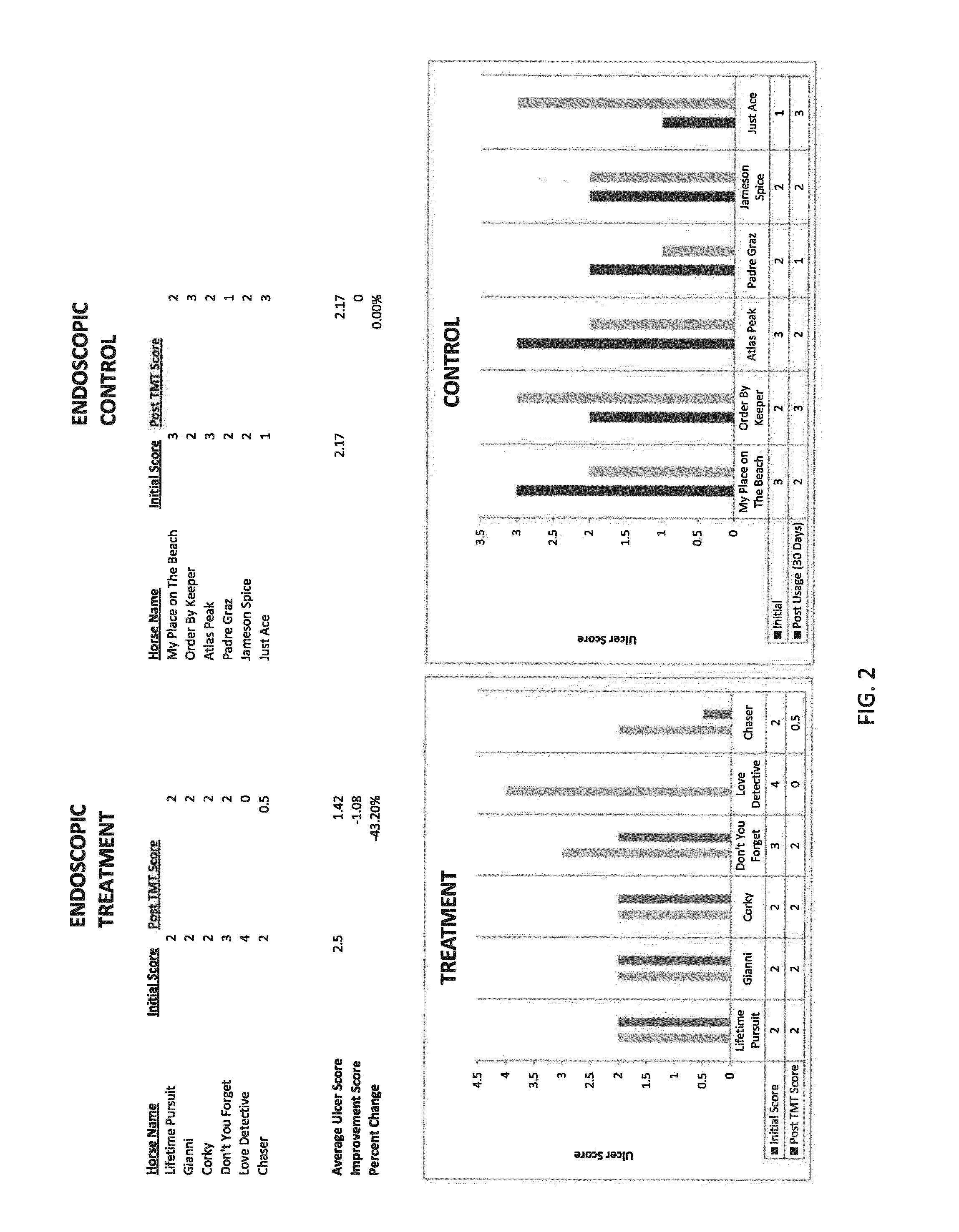Composition and method for improving gastrointestinal health of equine
a technology for equine gastrointestinal health and composition, applied in the field of composition and methods for improving the gastrointestinal health of equine, can solve the problems of poor appetite, prone to ulcer development, and more subtle symptoms
- Summary
- Abstract
- Description
- Claims
- Application Information
AI Technical Summary
Benefits of technology
Problems solved by technology
Method used
Image
Examples
example 1
[0048]If the target amount was 50 grams of calcium hydroxide / calcium oxide per horse per day and the feeding rate per horse was 10 pounds of feed per horse per day, then the calculation would be as follows: 2000 pound feed batch divided by the feeding rate (about 10 pounds per horse per day) equals 200 horses fed per 2000 pound batch of feed. 200 horses multiplied by 50 grams (the targeted daily amount of calcium hydroxide / calcium oxide per horse) equals 10,000 grams or 22 pounds of calcium hydroxide and / or calcium oxide to be added to each 2000 pound batch of horse feed.
example 2
[0049]In one example, the composition is formed with the following ingredients listed in percentage by weight:
[0050]Sugars—21
[0051]Calcium Oxide and Calcium Hydroxide—15.88
[0052]Canola Oil—15
[0053]Sodium Bicarbonate and Sodium Sesquicarbonate—14.12
[0054]Oatmeal—10
[0055]Probiotic—7
[0060]To create the special coating for the primary alkalizing agent, the sugars are pulverized and then mixed in with a folding action while the oil is added to form an emulsion. The oatmeal is also added via a slow folding action to provide a solid substrate, which acts as the attractant for the calcium oxide and calcium hydroxide that is added during a slow paddle mixing procedure. After an agglomeration appearance is attained, the fine sodium bicarbonate and probiotic are added to the sticky mixture via a slow paddle mixer. After the mixture is thoroughly blended, sodium bentonite is slowly added to abso...
PUM
 Login to View More
Login to View More Abstract
Description
Claims
Application Information
 Login to View More
Login to View More - R&D
- Intellectual Property
- Life Sciences
- Materials
- Tech Scout
- Unparalleled Data Quality
- Higher Quality Content
- 60% Fewer Hallucinations
Browse by: Latest US Patents, China's latest patents, Technical Efficacy Thesaurus, Application Domain, Technology Topic, Popular Technical Reports.
© 2025 PatSnap. All rights reserved.Legal|Privacy policy|Modern Slavery Act Transparency Statement|Sitemap|About US| Contact US: help@patsnap.com


